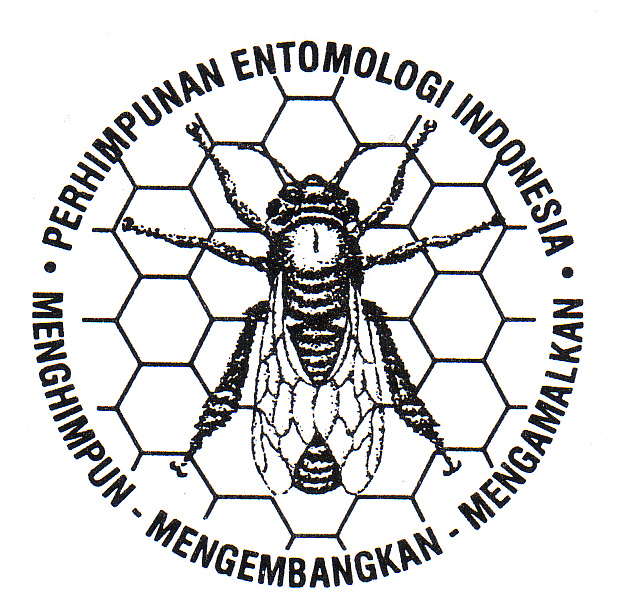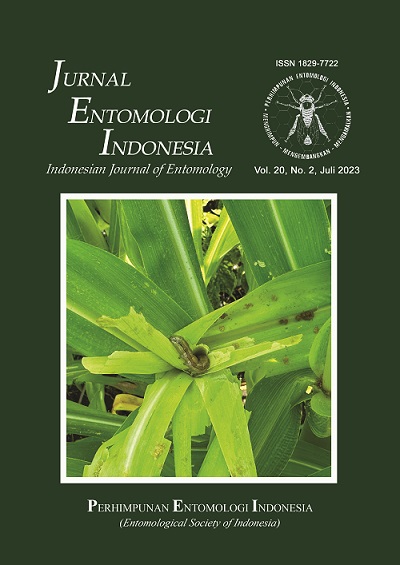Keanekaragaman laba-laba dan potensinya sebagai musuh alami hama tanaman jambu mete
DOI:
https://doi.org/10.5994/jei.10.1.24Keywords:
cashew pest, natural enemy, spiderAbstract
Sanurus sp., Acrocercops sp. and Helopeltis sp. are important pests of cashews in Nusa Tenggara Barat. Pesticide usage to control these pests has so far not been successful, and thus the usage of natural enemy as an alternative control methods should be developed. Spider represents one of the natural enemies which are found in cashew plantation. The aims of the research is to study spider population and its predatory ability in cashew plantation. The study has been conducted in an area of cashew plantation at Dusun Jugil, Desa Sambik Bangkol, Lombok Utara. Spider predation was directly observed for 78 days, starting from May to August 2009. Edgar formula was used to measure spider predation per day. The study found 19 species of spider consisting from eight families. The abundance of Neoscona theisi is higher than Tetragnatha maxillosa, but the proportion of N. theisi with prey is less than T. maxillosa. This phenomenon indicates that spider’s abundance, does not directly show its potential as natural enemy in that habitat. N. nautica consumed at least 3.84 preys per day, but not all of its prey represents the pest of cashew. N. theisi consumed 1.67 preys per day and all of its prey represents pests of cashew. This study show that the amount of prey which can be consumed by spider per day does not directly show the potential of spiders as natural enemey of cashew pest.
Downloads
Published
How to Cite
Issue
Section
License
Authors who publish with this journal agree to the following terms:
- Authors retain copyright and grant the journal right of first publication with the work simultaneously licensed under a Creative Commons Attribution 4.0 International License that allows others to share the work with an acknowledgement of the work's authorship and initial publication in this journal.
- Authors are able to enter into separate, additional contractual arrangements for the non-exclusive distribution of the journal's published version of the work (e.g., post it to an institutional repository or publish it in a book), with an acknowledgement of its initial publication in this journal.
- Authors are permitted and encouraged to post their work online (e.g., in institutional repositories or on their website) prior to and during the submission process, as it can lead to productive exchanges, as well as earlier and greater citation of published work (See The Effect of Open Access).








